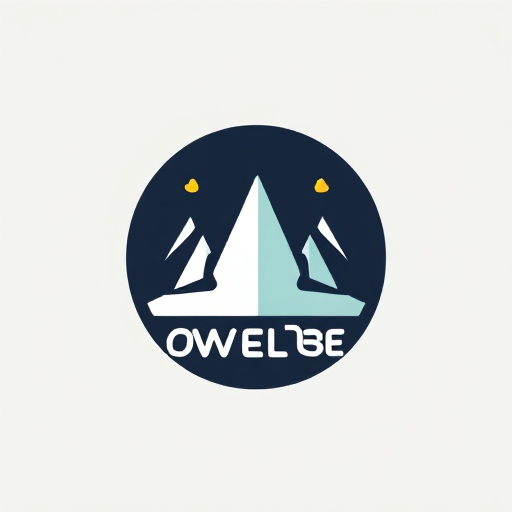Blogging On Notion: A Complete Guide For Creative And Efficient Content Creation
Notion, the all-in-one workspace that combines note-taking, task management, and collaboration, has rapidly become a favorite tool for bloggers. Its versatility, ease of use, and customization options make it a fantastic platform not only for organizing ideas but also for creating and managing blog content. In this guide, we will walk you through how to set up and use Notion for blogging, from structuring your blog to drafting and publishing content.
How to Earn Money Online – The Ultimate Guide to Financial Freedom!
Why Choose Notion for Blogging?
Before delving into the specifics of blogging on Notion, it’s important to understand why Notion is a powerful tool for bloggers:
- All-in-One Workspace: Notion integrates various functions into a single tool. You can write, organize, plan, and manage everything related to your blog all in one place. It eliminates the need for multiple apps to handle different tasks.
- Customization: Notion offers flexible templates and customizable pages, making it easy to adapt the platform to your specific blogging needs. Whether you need a simple editorial calendar or a comprehensive content management system, Notion can be tailored to suit your workflow.
- Collaboration: If you work with a team or guest writers, Notion provides seamless collaboration features. You can share your blog’s workspace, assign tasks, and leave comments directly on content drafts.
- Templates and Organization: Notion comes with a variety of built-in templates to help you organize your blog posts, including editorial calendars, content briefs, and task boards. These templates help streamline your blogging process and keep everything organized.
- Integration with Other Tools: Notion integrates well with other tools like Google Drive, Slack, and Trello, allowing you to import files and collaborate with your team efficiently.
Setting Up Notion for Your Blog
To get started blogging on Notion, follow these steps to set up your workspace:
1. Create a New Workspace
If you haven’t already, sign up for Notion and create a new workspace for your blog. This workspace will house all your blog-related content and organizational elements. You can name it after your blog or something that resonates with your blogging goals.
How to Earn Money Online – The Ultimate Guide to Financial Freedom!
2. Set Up Your Blog Structure
The next step is to structure your Notion workspace to suit your needs. Here’s a simple structure to get started:
- Dashboard: Create a homepage that acts as a central hub for your blog. You can link to different sections such as content planning, blog drafts, research, and ideas.
- Content Calendar: Use a calendar view to plan and organize your blog posts. You can schedule publishing dates, deadlines for drafts, and assign tasks to other collaborators.
- Blog Post Templates: Set up a template for your blog posts to ensure consistency in structure. You can include sections for your post title, introduction, body, call-to-action, and SEO notes. This template will streamline your writing process.
- Research & Ideas Database: Create a database to store ideas and research for future blog posts. This can include notes, relevant links, inspiration, and keywords to help guide your writing.
3. Use Notion’s Templates for Blogging
Notion offers several templates that can help you set up your blogging workflow more quickly:
- Editorial Calendar Template: This is a popular template for bloggers. It allows you to visualize your upcoming posts, track deadlines, and manage content flow.
- Writing and Research Templates: Notion has specific templates for writing and research that allow you to organize your ideas, track progress, and gather research notes.
- Content Strategy Template: If you want to develop a detailed content strategy, use this template to define your goals, target audience, content topics, and promotional plan.
To access these templates, go to the Notion template gallery and search for blog-related templates. You can then duplicate the templates to your workspace and customize them.
How to Earn Money Online – The Ultimate Guide to Financial Freedom!
Writing Blog Posts on Notion
Once your workspace is set up, you can begin writing and managing your blog posts. Here’s how to use Notion to draft and organize content:
1. Drafting Blog Posts
For each blog post, create a new page in Notion, either using a blank page or a template you created earlier. On this page, you can write your blog post, making use of Notion’s flexible editor.
- Sections and Headings: Use Notion’s heading styles to break your blog post into sections, making it easier to read and organize your thoughts.
- Multimedia: You can add images, videos, and other media directly into your blog posts by simply dragging and dropping them into the page. This is useful for visual content such as infographics or illustrations that accompany your post.
- To-Do Lists: As you write, use to-do lists to track specific tasks, such as editing, adding links, or inserting SEO keywords. This helps keep your writing organized and ensures you don’t miss any important steps.
2. Organizing Blog Posts
Use tags, categories, or a database to organize your blog posts. You can create a Blog Post Database in Notion to track the status of each post (e.g., draft, editing, published). In this database, you can add metadata such as:
- Title
- Status (draft, published, etc.)
- Tags (for categorizing posts by topic)
- Publish Date
- SEO Notes (keywords and meta descriptions)
How to Earn Money Online – The Ultimate Guide to Financial Freedom!
This makes it easier to keep track of your content and ensures that you don’t forget any important steps in the blog post process.
3. Collaborating with Others
If you work with a team, Notion makes collaboration simple. You can invite team members to your workspace, assign tasks, and leave comments on blog drafts. Each team member can have their own designated tasks, such as research, writing, editing, or promoting the post.
Publishing Blog Posts
While Notion is fantastic for creating and organizing blog content, it’s important to note that Notion is not a blogging platform in itself. Once your blog post is complete, you’ll need to transfer it to your live blog, which is usually hosted on WordPress, Medium, or another platform.
Here are a few ways to transfer your Notion content:
- Copy and Paste: You can copy the content directly from Notion and paste it into your blogging platform’s editor.
- Export to HTML: Notion allows you to export a page as HTML. You can then import this HTML into your WordPress or other CMS.
- Notion API: If you are technically inclined, you can use the Notion API to automate the process of transferring content from Notion to your blog.
How to Earn Money Online – The Ultimate Guide to Financial Freedom!
Growing Your Blog Using Notion
Notion can also be a powerful tool for growing your blog. By creating organized databases, setting content goals, and tracking analytics, you can develop a more strategic approach to blogging.
- Content Planning: Plan ahead for the types of blog posts you want to create, focusing on high-interest topics or seasonal content. Use Notion’s calendar and database features to plan your content pipeline.
- Track Blog Performance: Use Notion to track your blog’s analytics by creating a database for post-performance metrics such as traffic, shares, and comments. This will help you understand what types of content resonate with your audience.
- Engage with Your Audience: Notion can also be used to store and organize feedback from your audience. Whether it’s comments from readers or responses from social media, you can create a page dedicated to audience engagement and use this feedback to improve your content.
How to Earn Money Online – The Ultimate Guide to Financial Freedom!
Blogging on Notion is an excellent way to streamline your content creation process, keep your ideas and research organized, and collaborate efficiently with a team. With its versatile templates, customization options, and integration with other tools, Notion is more than just a note-taking app — it’s a powerful blogging platform for anyone who wants to stay organized and productive. By following the steps outlined in this guide, you can start using Notion to its full potential and take your blogging journey to the next level.







